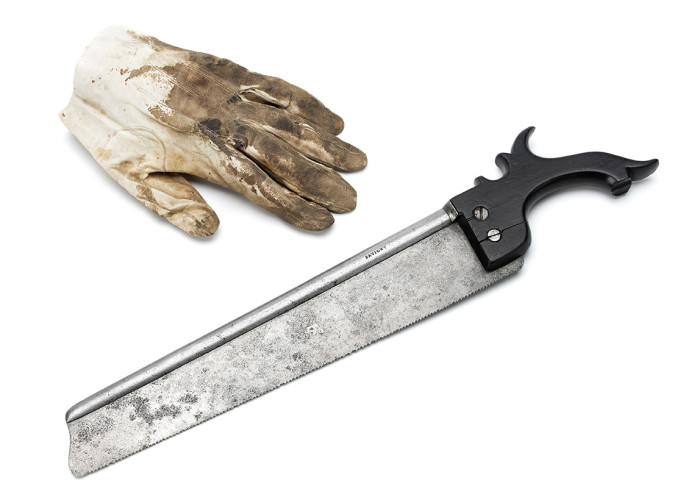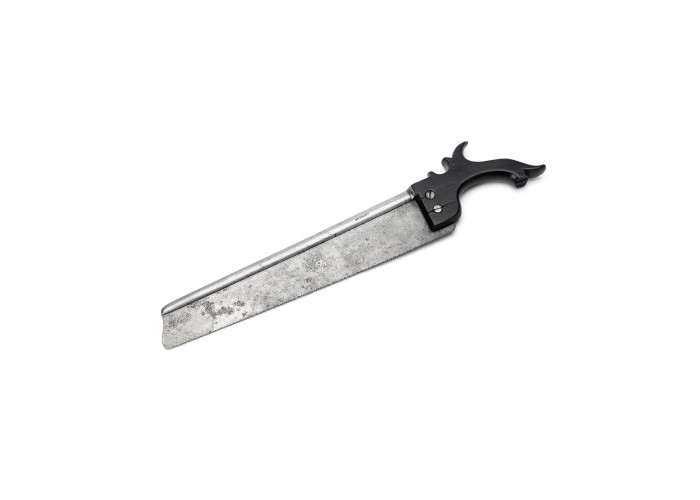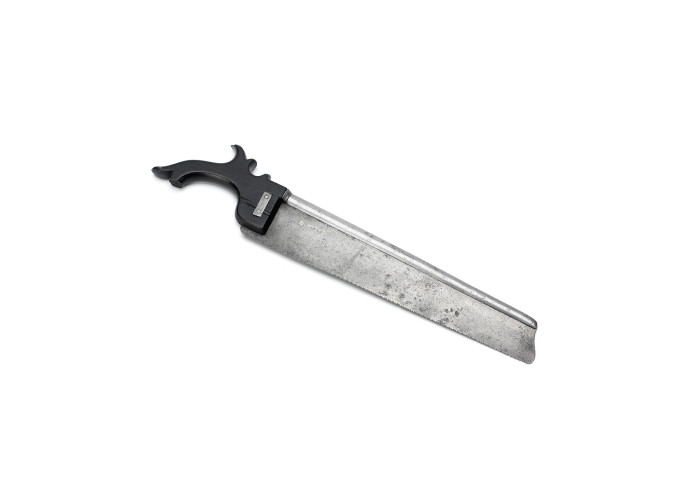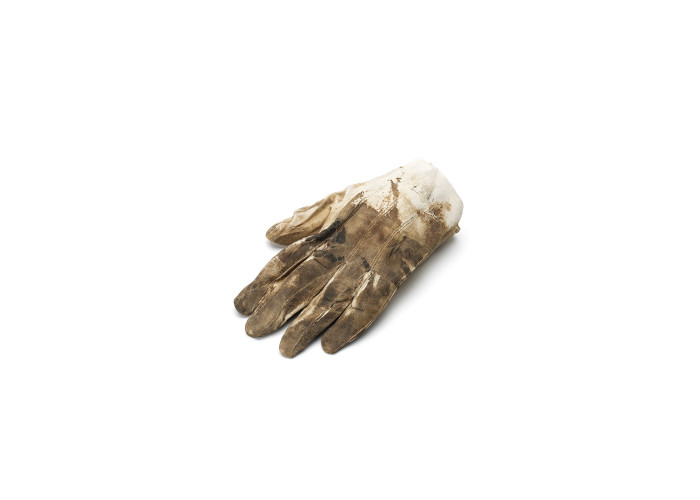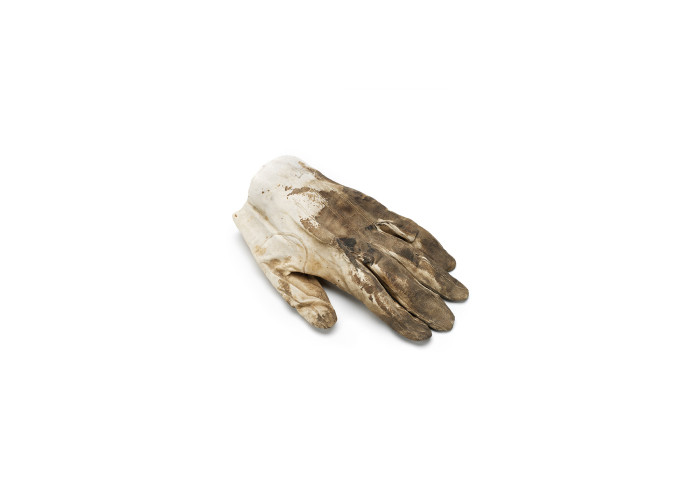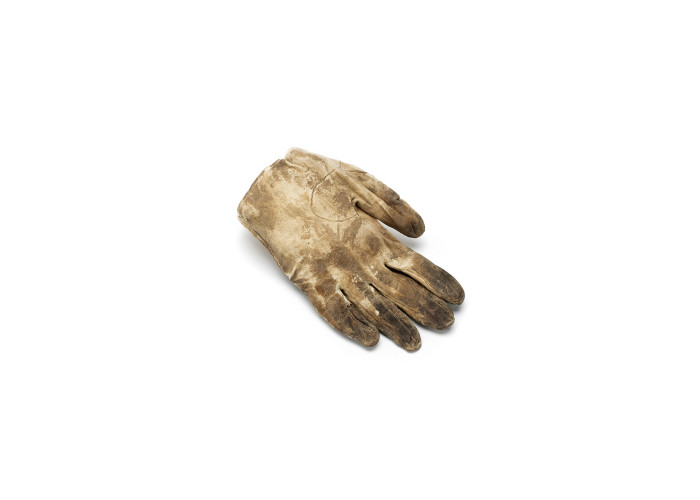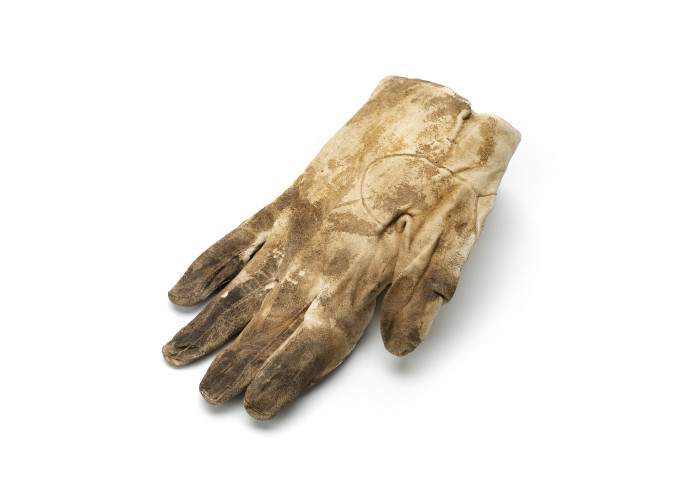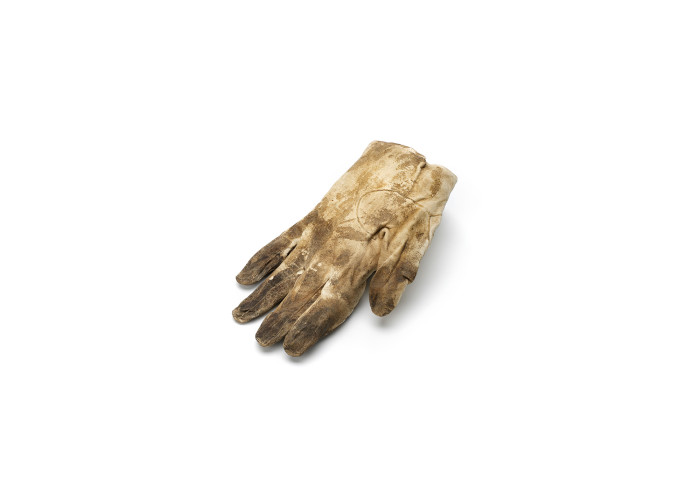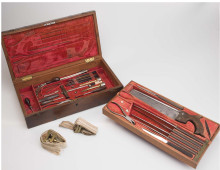Surgical Saw and Bloodstained Glove
This British surgical saw and a blood-stained leather glove were used after the Battle of Waterloo to amputate the leg of a senior British officer. The operation was needed to cut off the leg of Henry Paget, Lord Uxbridge (1768-1854), who commanded the British cavalry at the Battle of Waterloo.
During the final phase of the battle, at around 7.30 to 8.00pm, after Wellington had given the signal for a general advance of the victorious Allied line, Paget was struck on the right knee by a case-shot fired from a French cannon. He was riding forwards, close to the Duke, just beyond La Haye Sainte Farm. The shot passed over the neck of the Duke’s horse before hitting Uxbridge.
Wellington supported Uxbridge, who was then led to the rear by Captain Seymour, one of Paget’s aides de camp. Six advancing Hanoverian soldiers dismounted Paget and carried him back to Waterloo village. There, in a house owned by a Monsieur Paris, named Maison Tremblant, he was examined by Dr John Hume, Wellington’s personal physician and surgeon. Hume was clearly under some pressure. (He had just removed Colonel Alexander Gordon’s leg.) He sought a second opinion and requested assistance from an artillery surgeon to perform this risky procedure on a very senior officer.
When the operation was explained to Paget, he asked the surgeons to proceed. He uttered not a word during the operation and his pulse remained quite steady! At one point the saw jammed between the bone ends and he asked what was happening. He recovered and his leg was buried in the garden of Monsieur Paris’s house. For years the memorial was a prominent tourist attraction, until a dispute arose between the Paget family and Paris. Eventually the grisly relic was exhumed and burned.
The typically British surgical saw was made of crucible steel with an ebony handle. The division of the bone using a saw was said to be one of the more difficult parts of an amputation. The surgeon always tried to cut the bone as high as possible, in order to leave enough skin and muscle to cover the divided bone end. The glove is blood stained. It was probably used to press on the injured knee to control the initial bleeding.
-
Curatorial info
- Originating Museum: National Army Museum
- Accession Number: Saw NAM. 1960-02-3-1: Glove NAM. 1963-09-210
- Material: Steel, wood: Leather
- Size: Saw 415mm length x 90mm width x 17mm depth: Glove length 200mm x width 140mm x depth 65mm
-
Use this image
You can download and use the high resolution image under a Creative Commons licence, for all non-commercial purposes, provided you attribute the copyright holder.
- Rights Holder: Copyright National Army Museum. Photography Relic Imaging Ltd.
- License Type: Creative Commons
- Related Objects
Find it here
This object is in the collection of National Army Museum


